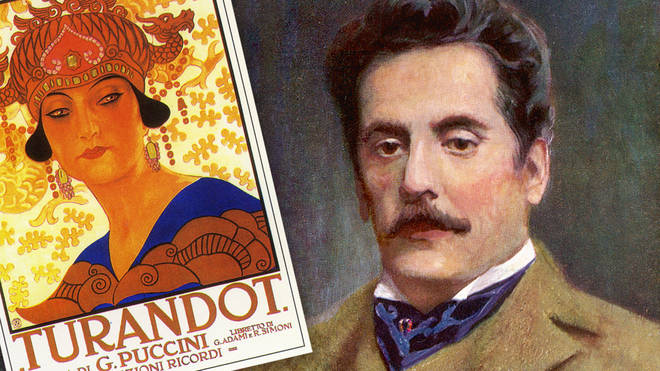
From ‘Tosca’ to ‘Turandot’, we explore Italian composer Giacomo Puccini’s greatest operas.
When it comes to tragic and heart-wrenching , it has to be Giacomo Puccini.
Young Giacomo was born in Lucca, Italy in 1858, into a family of musicians and composers. On seeing his first opera, Giuseppe Verdi’s Aida, a 15-year-old Puccini said he “felt a musical window had opened”.
Now widely considered the ‘heir’ of Verdi, Puccini is known as one of the great composers of Italian opera. While his early work is traditional, late-19th-century Romantic Italian opera, Puccini became better known for writing in the verismo style – Italian for ‘realism’.
He wrote 12 operas in total – Le Villi (1884), Edgar (1889), Manon Lescaut (1893), La bohème (1896), Tosca (1900), Madama Butterfly (1904), La fanciulla del West (1910), La rondine (1917), Il trittico (Il tabarro, Suor Angelica, Gianni Schicchi) (1918) and Turandot (1926). Here are his very best...
Manon Lescaut (1893)
After Puccini’s first full-length opera, Edgar, premiered to an underwhelmed audience at in 1889, the composer decided that for his next work, he would write both the music and the libretto, so that “no fool of a librettist” could spoil his masterpiece.
Manon Lescaut was very well received, and established Puccini’s reputation in Italian opera – although in the end, four other librettists came on board, including Luigi Illica and Giuseppe Giacosa, who returned for his three greatest successes (La bohème, Tosca and Madama Butterfly). Collaboration wasn’t such a bad idea in the end...
La bohème (1896)
Joyful beginnings lead to ultimate heartbreak in Puccini’s crowning jewel of an opera. Over 120 years after its conception, La bohème continues to be one of the 21st century’s most frequently performed operas, with Rodolfo’s exquisite song ‘Che gelida manina’ giving just a hint of what Puccini would be capable of when it comes to tenor arias.
When writing his characters Mimì and Rodolfo, Puccini was inspired by the poverty he experienced as a young man in Milan. The shortage of food, clothing and rent money he lived through is played out by the bohemians in his opera, which went on to inspire the hit musical Rent on Broadway.
Tosca (1900)
Vissi d’arte!’, ‘I lived for art!’, Floria Tosca cries as drums signal her lover, Mario Cavaradossi’s impending execution in the second act of Puccini’s glorious turn-of-the-century work. And in the following act, with an hour left to live, Cavaradossi responds in song with one of Puccini’s greatest romantic tear-jerkers: ‘E lucevan le stelle’.
In a tale of passion and romance ending in tragedy, both arias are proof of Puccini’s capacity to write a heart-wrenching melody, cementing ’s place in the list of great Puccini operas that continue to sell out the world’s opera houses today.
Madama Butterfly (1904)
In 1903, Puccini had a car accident that left him house-bound for eight months, with nothing to do but write. Just under a year later, Madama Butterfly premiered, but to a lukewarm audience response, and was withdrawn immediately.
Now, it is considered one of his great successes. Listen to the stunning, emotive melody of the soprano aria ‘Un bel dì vedremo’ (One fine day we’ll see), sung by Cio-Cio San as she imagines the return of her absent love, Pinkerton.
La fanciulla del West (1910)
A sweeping romance based on the 1905 play The Girl of the Golden West by American author David Belasco, La Fanciulla del West was the first of two Puccini works to have its world premiere at the New York Metropolitan Opera.
The brilliant, late Mexican tenor Rafael Rojas why Minnie’s final aria in this opera, is his favourite Puccini moment.
“It is a difficult task to choose the opera or scene from Puccini that moves me the most, but this time it comes to me strongly, the last Minnie’s aria from La fanciulla del West when she is talking to all the men that will soon kill her beloved and convincing them one by one to forgive him and let them go in peace by appealing to their compassion,” Rojas said. “It is a very deep and powerful scene.”
Gianni Schicchi (1918)
One third of ll trittico, a collection of three one-act operas that premiered at the Met Opera in 1918, Gianni Schicchi is perhaps better known for its show-stopping soprano aria, ‘’.
In a , Renée Fleming singled it out as one of her six favourite soprano arias. “Favourite arias for soprano start with Giacomo Puccini. And ‘O mio babbino caro’ is definitely my go-to.
“[It’s] an exquisite melody with a beautiful sense of longing as [the protagonist] asks her father if she can marry the boy that she loves and she threatens to jump in the river if he says no. It’s incredibly charming but also an immediately recognisable melody.”
Turandot (1926)Puccini wrote fantastic tenor leads and gave them some of his most poignant and harrowing arias. Among them, none are more memorable than Turandot’s ‘Nessun dorma’, which we have all come to associate with the great Luciano Pavarotti.
Turandot was Puccini’s final opera, which was unfinished when he died of throat cancer in 1924. It was completed in 1926 by the Italian composer-pianist Franco Alfano, and in the same year, Italian maestro Arturo Toscanini honoured the late composer by performing the opera at the New York Met, gently laying down his baton after the last note Puccini had written.

